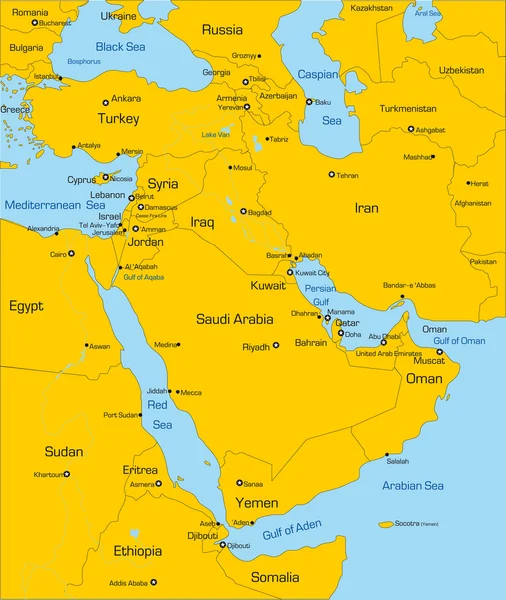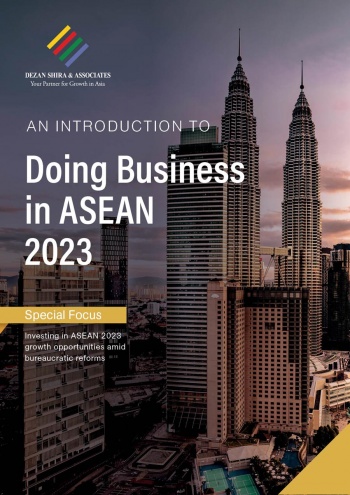The Normalization of Saudi – Iran Relations: Economic Capacity, Trade Potential and Outlook
By Farzad Ramezani Bonesh
Introduction
Over the past six decades, the diplomatic relations between Saudi Arabia and Iran have been severed three times (in 1942 and twice after the Islamic Revolution of 1979), while the two countries, both neighbours and Muslim alike, have also experienced political ups and downs in more recent years, and relations were completely severed again in 2016. The two countries are regionally important economies with influences that spread throughout the Middle East – and beyond. Getting them together and agreeing with each other therefore has specific regional ramifications.
Recently however, the two countries started negotiations to reduce tensions with the mediation of Iraq, Oman and China. Finally, on April 7, 2023, seven years after diplomatic relations were severed, with China’s influence, the two countries agreed to resume diplomatic relations, to restore trade relations, and re-activate embassy and diplomatic ties.
With the opening of the Iranian Embassy and Consulate in Saudi Arabia, the first official visit of the Saudi Foreign Minister to Tehran, and the official invitation of King Salman bin Abdulaziz to the President of Iran, Ebrahim Raisi, to Saudi Arabia, the process of diplomatic and political relations is improving and increasing step by step.
However, with the official resumption of relations between the two countries, along with the continuation of talks on political issues, cooperation between the two countries in the fields of economy and trade is also under consideration. We discuss the economic and trade capacities together with their potential.
Energy
Saudi Arabia and Iran possess about 37% of the world’s oil reserves. Strengthening their mutual cooperation both together and within the framework of OPEC and OPEC+ can be more useful in accessing common interests such as market control and ensuring the maximum interests of both producers. The two countries have huge gas reserves and could cooperate to increase production and potentially offset global price fluctuations.
In the petrochemical industry, there are also fields of cooperation, with the aim of regulating the market for the benefit of producers.
Iran wants to increase petrochemical production to 140 million tons per year by 2026, which requires an investment of US$70 billion. Meanwhile, the investment potential of Saudi Arabia’s SABIC and Aramco companies can be a win-win.
One of the most prominent investment opportunities for Riyadh in Iran is the energy sector (Iranian oil and gas, petrochemical, and electricity industries). Despite some differences in joint oil and gas fields, both countries can benefit from increased cooperation in oil and gas exploration and joint production, infrastructure development, equipment construction, and turning competition into cooperation.
Iran’s oil and gas industry needs more than US$100 billion in reinvestment, while the electricity industry needs US$25 billion of investment. Saudi Arabia can definitely play an important role.
Saudi Arabia also plans to upgrade its power generation, distribution, and transmission sector and increase its power generation capacity to 160 gigawatts. Iranian companies can cooperate in this field. Benefits can extend elsewhere, most notably Pakistan, which is energy poor and would benefit from Saudi-Iranian efforts in this area, as well as electricity exports to the South Caucasus, Russia, and Central Asia.
Renewable energy development has also become one of the main priorities of Middle Eastern governments. Cooperation between Iran and Saudi Arabia can lead to the production of solar energy and renewable energy. Bilateral cooperation can overcome the obstacles to the development of new energies in Iran, such as sanctions, economic and the lack of financial resources and problems in the way of investors.

Transit and Logistics
Bilateral cooperation and strengthening of common interests in transportation and regional logistics is very important. Through the North-South Corridor (INSTC), Iran can be the connecting route for Saudi Arabia to access the economies of Central Asia, Russia, the Eurasian Economic Union (EAEU), and Eastern Europe.
Strengthening multilateral, trilateral, and Iran-Arabia-India-Russia cooperation in the North-South Corridor is a win-win situation. Strengthening the tripartite cooperation between Iran-Arabia-China along China’s Belt and Road Initiative is another. For example, any presence of Riyadh in the China-Kyrgyzstan railway project (BRI) or China-Pakistan-Iran multilateral logistics projects can benefit both sides and especially the China-Pakistan CPEC projects.
The joint development of land-rail transportation infrastructure on both sides is important. As part of its Vision 2030 plan, Saudi Arabia invests heavily in public transport infrastructure such as railways, highways, and ports. There are opportunities for the presence of Iranian companies in this sector.
Also, one of the most prominent investment opportunities for Saudi Arabia in Iran is transportation infrastructure, such as Iran’s northern Caspian, and southern Persian Gulf ports and facilities. For example, the proposed submarine tunnel project in the Strait of Hormuz, the possibility of connecting the Arabian Peninsula with Eurasia, Central Asia, and the Caucasus by rail and road are projects with significant trade, energy security and connectivity impacts.
In addition, with the Saudi Arabia-Iran rail connection plan (a proposed rail line from Kuwait and Iraq), it will be easier to transfer goods through rail connections.
One of the strategies of the Saudi economy is to become a logistics hub between Africa, Europe, and Asia. Bilateral cooperation in transit and logistics can lead to easier access for Iran to Africa and better access for Saudi Arabia to Eurasia. In addition, joint interactions on flight lines, air traffic, and expansion of air and sea lines are also pointers ahead in increasing trade.
Industry and Mining
Despite abundant mineral resources, the mining sector is developing in both countries. More exports of Iran in steel, ceramic cement, and construction materials to Saudi Arabia, the construction of joint steel factories in Saudi Arabia, and export of engineering services, are all under consideration.
Saudi Arabia’s technology (ICT) market is the largest in the Middle East. Also, cooperation in industrial cooperation concerning equipment and machinery; technology and capabilities of bio, nano, and drug production; medical equipment; automobile manufacturing; food processing; are all areas where new investments are being made.
Tourism Development
From the perspective of both Saudi Arabia and Iran, tourism is a key sector. Both Iran and Saudi Arabia have many cultural and religious places that can attract tourists. Saudi Arabia hosts Islamic holy places.
Measures to facilitate two-way travel, expanding and reviving cultural-political relations, expanding cooperation in providing services, expanding flights, and facilitating the issuance of visas and tourism technology can all be expected to lead to developing the tourism sector. For example, according to Tehran, Iran has the capacity to accept 6 million health tourists annually, if Riyadh can cover the lack of suitable hotels to provide such services to tourists.
Food Security
Saudi Arabia is a major importer of food products and imports more than 75% of its food needs. On the other hand, Iran also imports as part of its needs. Iran and Saudi Arabia have much potential for cooperation in food security. On the one hand, the two countries can complement each other’s weaknesses. According to the new geopolitical developments at the global level, providing food security can be an axis for commercial and economic cooperation between Tehran and Riyadh.
Investment and other areas
Saudi Arabia has provided more than US$145 billion in direct investment in foreign countries, but up until recently, Iran did not have any share in attracting this capital. Now Riyadh has many capabilities to invest in Iran’s economy. From Riyadh’s point of view, Saudi Arabia’s investment in Iran can be made ‘very quickly’. A previous document on Iran-Saudi economic, commercial, and investment cooperation can be a good foundation for Iran-Saudi economic cooperation.
However, the two countries need other documents such as avoiding double taxation, encouraging and supporting mutual investment, customs agreements, and catching up on digitizing their trade and so on.
Efforts to conclude trade agreements, including preferential trade agreements, supporting joint ventures, signing customs agreements, economic roadmaps, forming a joint chamber of commerce, creating special economic zones, and creating joint free trade zones would also improve commercial and economic relations. The groundwork is now being put in place to recover this lost opportunity ground.
In addition, the early examination of the challenges and the start of the negotiations of bilateral preferential and free trade agreements between Iran and the GCC can be considered by Tehran and Riyadh to promote trade. Strengthening business relations in the private sector, holding investment conferences and trade exhibitions, creating innovative infrastructure, and buying shares of companies on both sides will develop the business.
Iran, as the newest member of the Shanghai Cooperation Organization (SCO), can be the cornerstone of Saudi-Eurasian cooperation. With Iran’s membership in the Shanghai Cooperation Organization, Tehran can contribute to Saudi Arabia’s full membership in this organization.
More cooperation in some international and regional economic institutions, such as BRICS, and even creating a regional economic union in the Middle East can be a suitable strategy for business development. In addition, there are still platforms for contracts in the field of weapons, local production of equipment, and Iran’s nuclear technology.
Trade Developments
Over recent years, Iran’s imports from Saudi Arabia have been near zero. In 2022, only US$14 million of products were exported to Saudi Arabia, including marble, truck, tractor bodies, and steel ingots.
However, Iran’s mining exports to Saudi Arabia are expected to reach US$200 million this year. From Tehran’s point of view, trade with Saudi Arabia can increase to US$2 billion by 2030 by focusing on products such as steel, saffron, carpets, cement, dried fruit, and other products.
Vision
The geopolitical and geoeconomic profile of the Middle East is changing. From the geo-economic point of view, removing the tension between Saudi Arabia and Iran is an inevitable necessity. Yesterday’s rivals can be good friends and allies for tomorrow.
However, obstacles, such as banking restrictions, legal and operational ambiguities, and American sanctions, are serious issues to overcome in promoting economic relations between the two countries.
That said, with the existence of vision programs in both countries and the need for stability for investment, the future of economic and commercial relations depends on the future of political relations. Spectacular results cannot be expected in the short term. But Iran and Saudi Arabia have entered a period of interaction after a long time of non-cooperation.
In this situation, commercial relations will develop with mutual understanding between governments, formulation of a legal framework for joint investment, and reduction of possible risks and conflicts. Therefore, it is possible to expect about US$1 billion in bilateral trade in the short term, to 2025-6, with multi-billion dollar business flows in the coming years, followed by expansion to tens of billions from 2030 onwards.
Related Reading
- Saudi Arabia and Iran Rebuild Ties After Beijing Brokers A Deal
- Iran, Saudi Looking To Develop US$2 billion In Bilateral Trade
About Us
Middle East Briefing is one of five regional publications under the Asia Briefing brand. It is supported by Dezan Shira & Associates, a pan-Asia, multi-disciplinary professional services firm that assists foreign investors throughout Asia, including through offices in Dubai (UAE), China, India, Vietnam, Singapore, Indonesia, Italy, Germany, and USA. We also have partner firms in Malaysia, Bangladesh, the Philippines, Thailand, and Australia.
For support with establishing a business in the Middle East, or for assistance in analyzing and entering markets elsewhere in Asia, please contact us at dubai@dezshira.com or visit us at www.dezshira.com. To subscribe for content products from the Middle East Briefing, please click here.
- Previous Article Israel, Vietnam Sign Free Trade Agreement
- Next Article UAE Business Owners: Be Careful How Much You Pay Yourself





